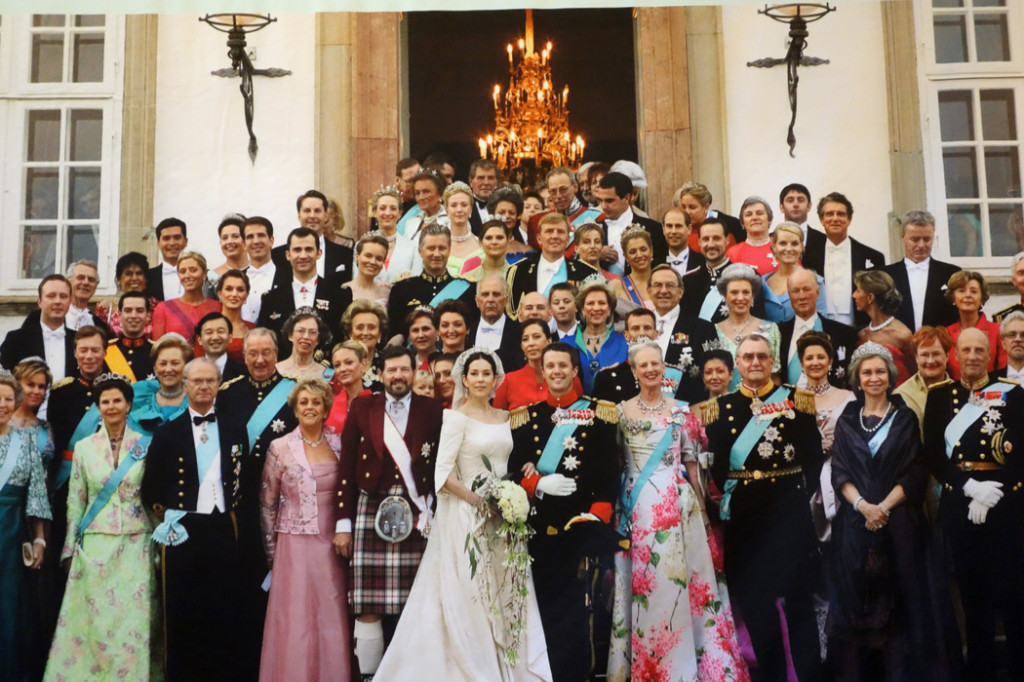Scandinavia feels like Europe’s most modern corner. But unlike Germany, France, Italy, or Greece, the Scandinavian countries all still have their royal families.
Norway, Sweden, and Denmark are all constitutional monarchies. Their royal families know they are anomalies. But as long as they don’t embarrass the citizens who pay for their jeweled lifestyles with stupid scandals (like Spanish and English royals have done in recent decades), pragmatic Scandinavians seem to like the idea that figurehead monarchs do the fancy VIP receptions and ribbon-cutting ceremonies… and their prime ministers get to focus on the serious governing.
Seeing this system working well — and seeing ours not (when our country’s appetite for a glittering human symbol of our government is incompatible with its insistence that our rulers are not above the rules) — I can understand why Scandinavians continue to enthrone kings and queens. And as for sightseeing, all those palaces, crown jewels, and glittering processions add some razzle-dazzle to the traveler’s day.
Touring a palace in Copenhagen, I enjoyed this photo of an extended royal family gathering, which included blue-blooded royals from all over Europe. Danish royals are particularly adept at marrying their children into other royal families. That used to be a key to a country’s well-being. These days, I think it just means that you have to put on the tux a little more often. Denmark’s King Christian IX was famously nicknamed the “father-in-law of Europe”— his children eventually became or married royalty in Denmark, Russia, Greece, Britain, France, Germany, and Norway.
In Copenhagen, much of your sightseeing involves Denmark’s royal heritage — like here, at Amalienborg Palace. While Queen Margrethe II and her husband live quite privately in one of the four mansions that make up the palace, the twin mansion just across the cobbled square is open as a museum, which I found particularly interesting. It displays the private studies of the four kings who ruled Denmark from 1863 to 1972 (the immediate predecessors of today’s Queen). Each room affords an intimate and unique peek into Denmark’s royal family. They feel particularly lived-in — with cluttered pipe collections and bookcases jammed with family pictures — because they were.
Many countries have one dominant figure in their history — a big and charismatic personality who really shaped the place. Denmark’s larger-than-life king was Christian IV, who ruled for 60 years in the 17th century and created modern Denmark. This painting decorates the chapel that holds his tomb in the cathedral at Roskilde. The king was a large man who also lived large. A skilled horseman and avid hunter, he could drink his companions under the table. He spoke several languages and gained a reputation as outgoing and humorous. His lavish banquets were legendary, as were his romantic affairs. This painting shows Christian IV wearing his trademark eye patch. He lost an eye to some shrapnel in a sea battle and, according to legend, pulled out the shard and made it into an earring for his mistress. Great he was… until his many wars impoverished his once-mighty country.



“Their royal families know they are anomalies”
For someone who claims to know about Europe, you are remarkably pig-ignorant. It is no surprise that people on TA make fun of you and your acolytes. Do you really think the Swedes agree with you that their constitution is an “anomaly”. I wonder what bollocks you will spout next – Germany is a republic but without an executive president so you don’t like it? Or France has an executive president but isn’t a federal country so it doesn’t count?
Really, if you are going to continue to advise your fellow Yanks, then you need to quickly learn that not the whole world is like yours and not everyone wants to be like your place.
Regards
Keith
Carl XVI of Sweden (first male on the left, front row) looks distinctly bored or annoyed in that wedding photo.
Well, I have no desire to be rude about it, but indeed, someone from a country currently totally mired in useless gridlock might be a little more polite about other peoples’ systems. Especially when their “democracy” more closely resembles a cross between corporatocracy and plutocracy. I grew up in England, and at the time I moved to the US I was a small “r” republican. Didn’t take long in the US for me to become a fervent supporter of constitutional monarchy. I still am.